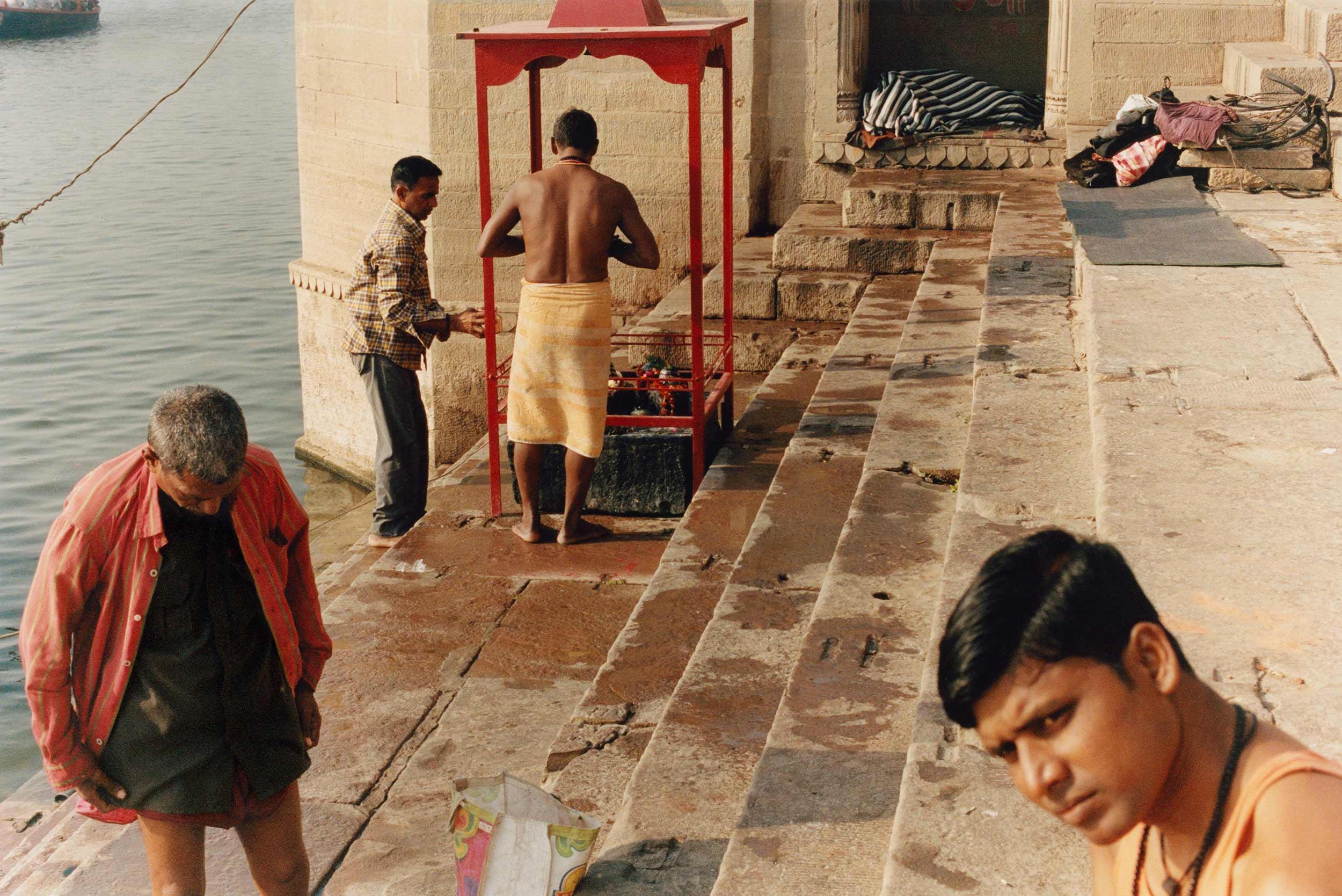Amidst political turmoil over water rights, pollution, and scarcity, photographer Marc Hibbert captures small moments of ecstasy and serenity at the Ganges.
A young man sits on the water’s edge, droplets glittering on his naked shoulders and a string of red beads around his neck. Five girls in pleated white dresses and long black braids tied move in tandem towards the waves—they’re all linking arms but for one girl who has hers crossed, hanging back or lost in thought. Clothing has been washed in the murky water and hangs along the muddy riverbanks to dry in the fading afternoon sunlight. This custom is fast becoming increasingly futile—India’s rivers, including the Ganges, are dangerously polluted—but the people in Marc Hibbert’s photographs didn’t come here just to do laundry. As Hibbert explains, the connection between India’s population and its water sources is deeply personal, and no waters are more sacred than the holy Ganges. People will travel for days for this immersive religious experience to release themselves of sin, to heal body and mind, and to be closer to the gods—often leaving elaborate statuettes of Ganesha and Ganga, the river goddess herself, to lie along the waste-strewn shores.
While in India, Hibbert was drawn to this hive of activity, both ritual and chore, surrounding the Ganges and its tributaries. India’s much-discussed water scarcity crisis has turned its rivers and lakes into political tools domestically as well as weapons in international relations, due to shared water sources with Pakistan and China. (The 1960 Indus Waters Treaty between India and Pakistan could soon be abandoned by the Modi government, while China has blocked some water flows ahead of new hydropower plant developments.) Hibbert’s photographs offer an alternative narrative about India’s water sources, revealing small moments of ecstasy and serenity—young boys splashing excitedly, silhouetted bodies resting in the shallows as the sun sets—that serve as microcosms of the Indian experience.






































